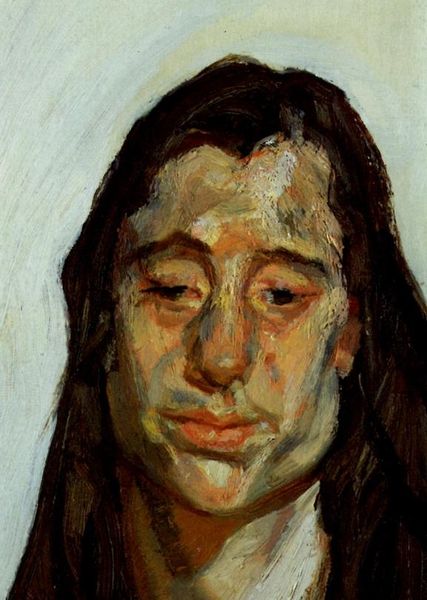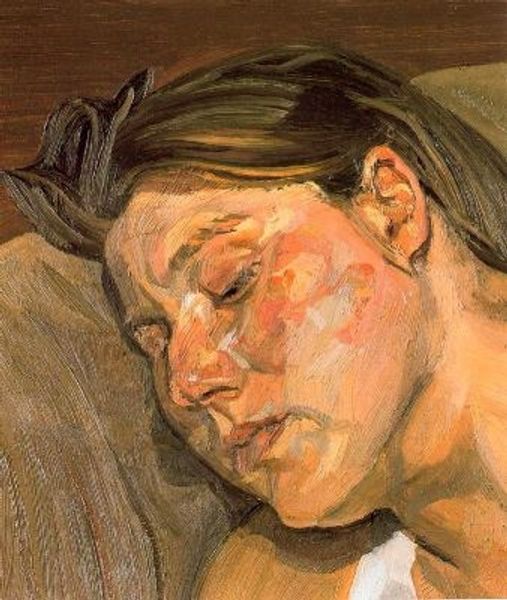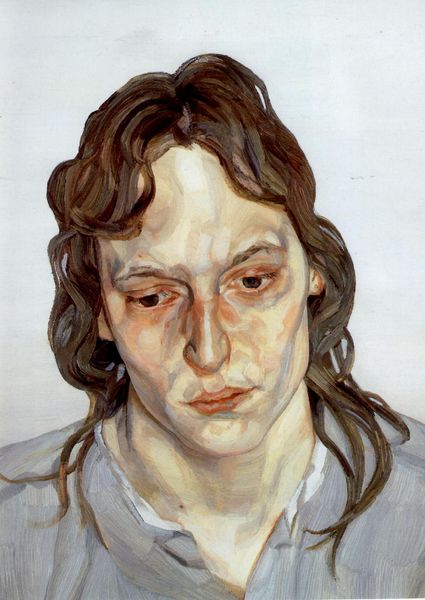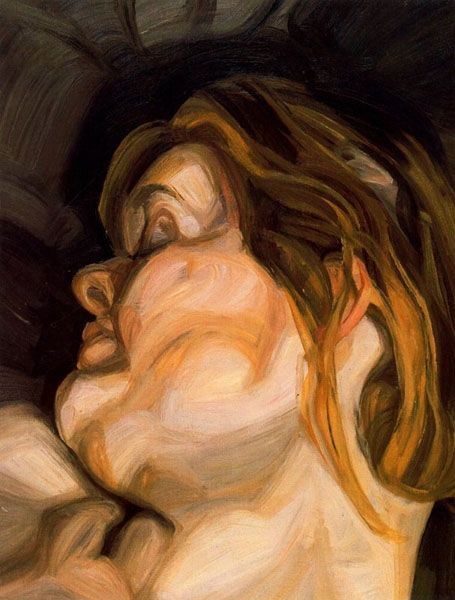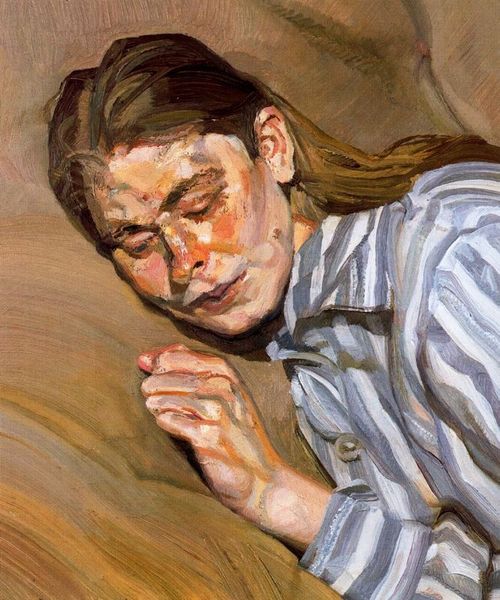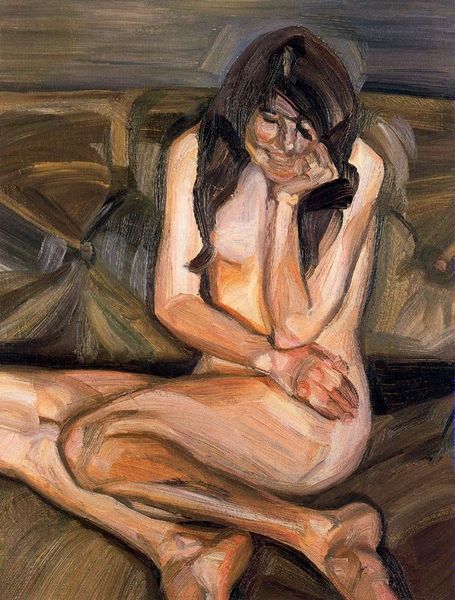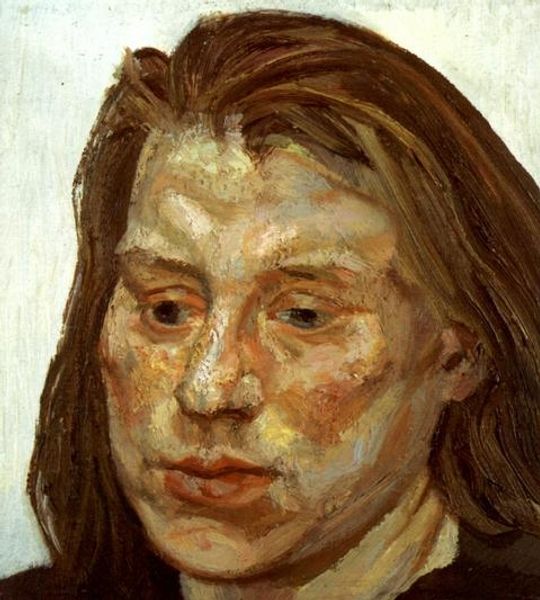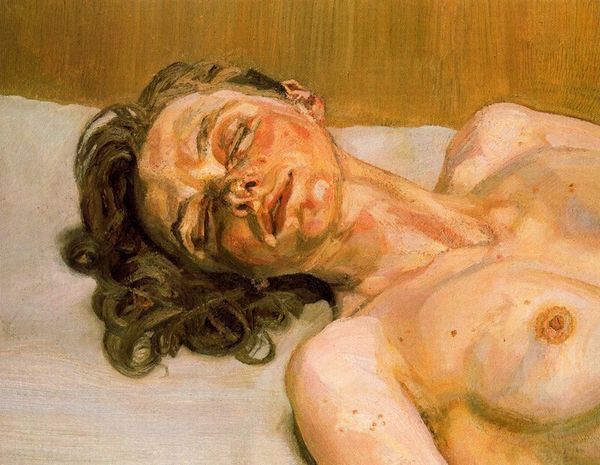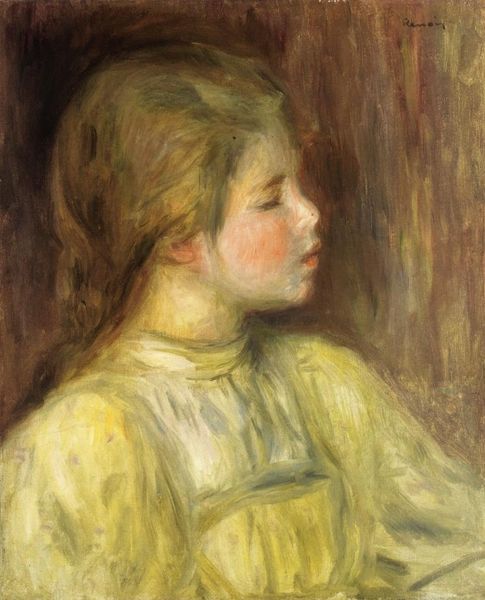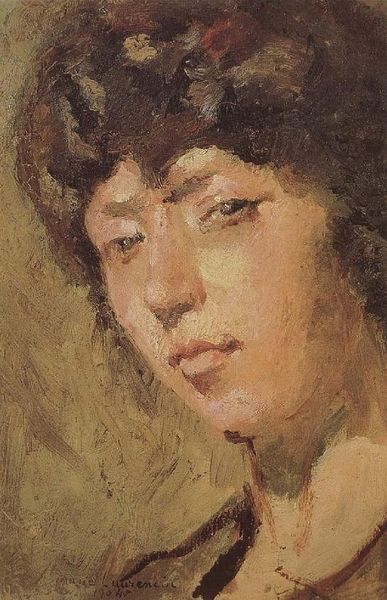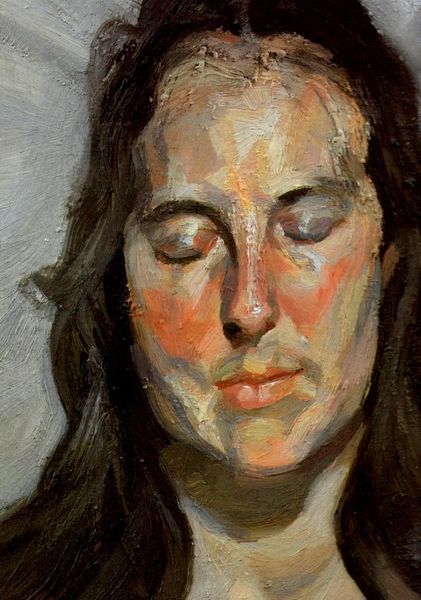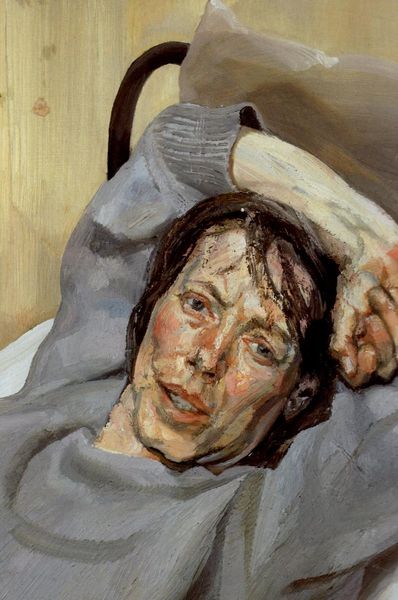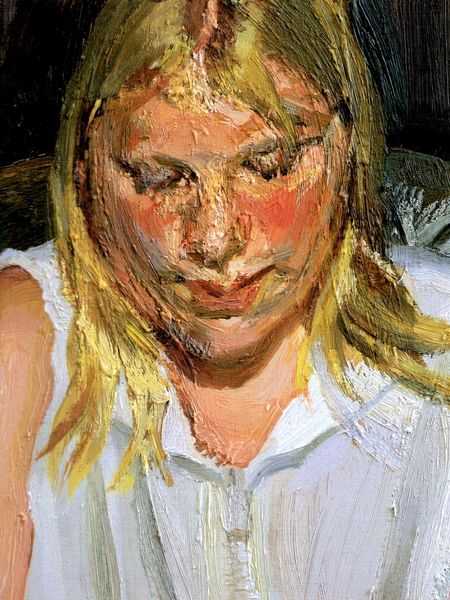
Dimensions: 55.8 x 71 cm
Copyright: Lucian Freud,Fair Use
Curator: Here we have Lucian Freud's "Woman Smiling," painted in 1959. It's an oil on canvas portrait, currently held in a private collection. Editor: It’s interesting; my first impression isn’t really "smiling." It’s more of a… wistful contemplation. There’s a fragility there, almost melancholic, in her lowered gaze and the soft shadows playing across her face. It feels very intimate. Curator: Freud was known for his unflinching gaze. It's not idealized; you see every line, every slight imperfection. It's very much in line with the realism movement—the aim wasn’t to flatter but to represent honestly. Those aren’t conventional brushstrokes. The contours are sharp and very defined, a brutal but insightful depiction. Editor: Right. It is that brutal honesty that's arresting. You almost feel like you're intruding on a private moment. Do you think the averted eyes signify introspection, an inward turning of thoughts and feelings? There is something unsettling about her smile; maybe that’s because her eyes are closed. Is that a trick he played, giving a smile while removing that contact? Curator: Absolutely. Consider how smiles work symbolically. Traditionally, they denote happiness, acceptance, and even a form of social agreement. Here, it feels muted, perhaps incomplete. And there is the contrast with the visible ageing—time weighs on us, as the shadows intimate, even during our moments of pleasure. The shadows cast by the nose, brow, cheek, neck--that all points at life. Editor: The choice of light feels significant. The woman’s illuminated just so, bathed in light—almost spiritual. But does that heightened observation of detail offer truth, or just the artist’s interpretation? Is this empathy, or artistic objectification? Curator: Well, I think the intensity is also where the modernism creeps in, wouldn't you agree? Freud wasn't afraid of discomfort, either for himself or the viewer. He wanted to delve beneath the surface. In that respect, this goes far beyond pure Realism. Editor: Fair point. Ultimately, for me, the painting isn't about a simple smile. It’s an inquiry into human vulnerability, caught in time. A fleeting expression that suggests much more than it reveals. Curator: Precisely, and it's precisely that tension that makes it a compelling portrait.
Comments
tree almost 2 years ago
⋮
what makes a woman who has experienced the vicissitudes of life smile so satisfied?
Join the conversation
Join millions of artists and users on Artera today and experience the ultimate creative platform.
behiveme almost 2 years ago
⋮
A smile she can not hold back
